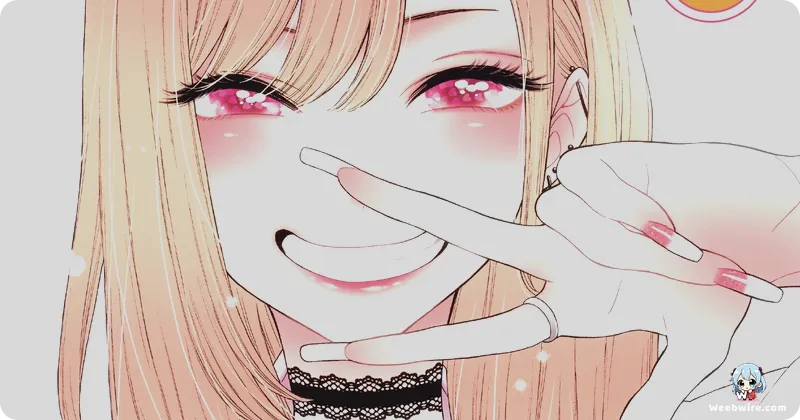My Dress-Up Darling: Unpacking the Meticulous Craftsmanship Behind the Cosplay Phenomenon

My Dress-Up Darling, known in Japan as Sono Bisque Doll wa Koi wo Suru, has captivated audiences worldwide not merely as a heartwarming romantic comedy but as a profound exploration of passion, craftsmanship, and self-discovery. Beyond its vibrant cosplay and endearing characters, the series stands as a testament to meticulous artistry and unwavering dedication, revealing fascinating insights that deepen our appreciation for its cultural resonance and impact on the anime landscape.
At the very heart of the series' undeniable authenticity lies manga artist Shinichi Fukuda's extraordinary commitment to exhaustive research. Fukuda-sensei's hands-on approach is truly remarkable; he doesn't just observe, but actively immerses himself in the world of cosplay. This involves attending numerous real-world cosplay events, engaging in in-depth interviews with experienced cosplayers, and even personally undertaking the intricate process of costume creation. This profound dedication ensures that every single detail—from the precise choice of fabric and the delicate stitching to the myriad challenges faced by aspiring cosplayers like Wakana Gojo and Marin Kitagawa—feels genuinely rooted in authentic, lived experiences. This deep dive into the practicalities and nuances of the cosplay community is a fundamental reason why both the manga and its anime adaptation resonated so profoundly with fans globally, earning immense respect for its faithful and respectful portrayal of the craft.
Marin Kitagawa, the vivacious and uninhibited female lead, was intentionally conceived to defy conventional archetypes of female protagonists. Her boundless energy, unapologetic enthusiasm for every facet of otaku culture—spanning from beloved magical girl anime to intricate adult visual novels—was meticulously crafted to highlight her genuine, unbridled passion. This makes her incredibly relatable and an instant fan favorite. Her dynamic and expressive facial animations, capable of conveying an astonishingly vast range of emotions, were a particular focal point for both Fukuda-sensei during the manga's creation and for Studio CloverWorks during the anime's production, solidifying her status as an iconic and beloved character.
In stark contrast, Wakana Gojo, the quiet and introspective male lead, dedicates his life to the traditional Japanese craft of Hina Doll making. His name, Wakana (若菜), subtly translates to 'young greens' or 'new shoots,' a poetic hint at his profound personal growth and blossoming confidence throughout the series. Gojo's deep-seated passion for this time-honored, intricate craft beautifully juxtaposes Marin’s more modern, vibrant hobbies. Yet, it is precisely their shared pursuit of craftsmanship, albeit in vastly different forms, that forms the bedrock of their unique and evolving bond. This compelling juxtaposition eloquently highlights the series' broader, universal theme: that passion, in any of its myriad forms, possesses the remarkable power to connect disparate worlds, bridge seemingly vast differences, and forge deep, meaningful connections between individuals.

Studio CloverWorks elevated the source material to new heights with breathtaking visual fidelity, particularly in its masterful and unparalleled portrayal of fabrics and textures. Animators undertook extensive studies, meticulously analyzing how various materials—from the delicate sheerness of lace to the shimmering brilliance of sequins and the weighty drape of brocade—move, fold, and reflect light under different conditions. This unparalleled attention to detail is absolutely paramount for a series where costumes are not merely accessories but central to the narrative and visual appeal. The studio's exceptional ability to render complex fabric dynamics transforms each and every cosplay sequence into an exquisite visual feast, making the costumes feel tangible and alive. Furthermore, the fluid character animation enriches the entire viewing experience, bringing the subtle nuances of each character's personality and emotions vividly to life.
Beyond the stunning visuals, the anime's truly immersive quality is significantly amplified by its exceptional sound design and captivating voice acting. The bustling, vibrant sounds of a convention hall, the subtle, almost imperceptible rustle of fabric as a character moves, and the quiet intimacy of heartfelt conversations are all meticulously layered to create a rich auditory landscape. Hina Suguta’s captivating voice performance as Marin Kitagawa is particularly noteworthy and deserving of immense praise. Her energetic, uninhibited, and utterly charming portrayal perfectly encapsulates Marin’s effervescent spirit, making her an unforgettable character. Suguta’s seamless transition between bubbly excitement and moments of genuine vulnerability adds incredible depth and authenticity to Marin, making her feel incredibly real to the audience.
The real-world impact of My Dress-Up Darling has been nothing short of substantial, sparking a significant surge of interest in the art of cosplay and effectively showcasing its intricate complexities and the dedication it requires. It has inspired countless real-world cosplayers across the globe to meticulously recreate Marin Kitagawa’s iconic outfits, most notably her beloved Shizuku-tan costume, which has become a global cosplay sensation. The series has successfully bridged the gap between the broader anime fandom and the practical, often challenging, art of cosplay, fostering a much greater understanding, appreciation, and respect for this creative community. My Dress-Up Darling stands as a powerful testament to the enduring appeal of authentic storytelling and meticulous production, securing its well-deserved place as a cherished and influential series for many years to come.
Credits
My Dress-Up Darling
Author
Shinichi Fukuda
Cover Art
Takeshi Nakatomi
Studio
CloverWorks
Publisher
Square Enix
Producers





